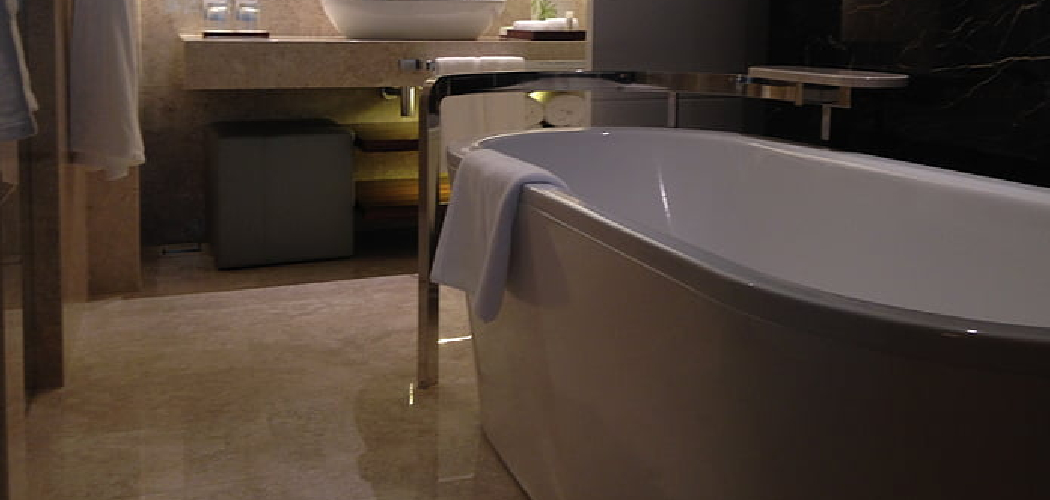Taking a bath can be a relaxing and rejuvenating experience, but what if you don’t have access to a bathtub? Whether you’re traveling, living in a small space, or simply not having a tub, there are still ways to enjoy the benefits of a bath. In this guide, we’ll explore how to take a bath without a bathtub.
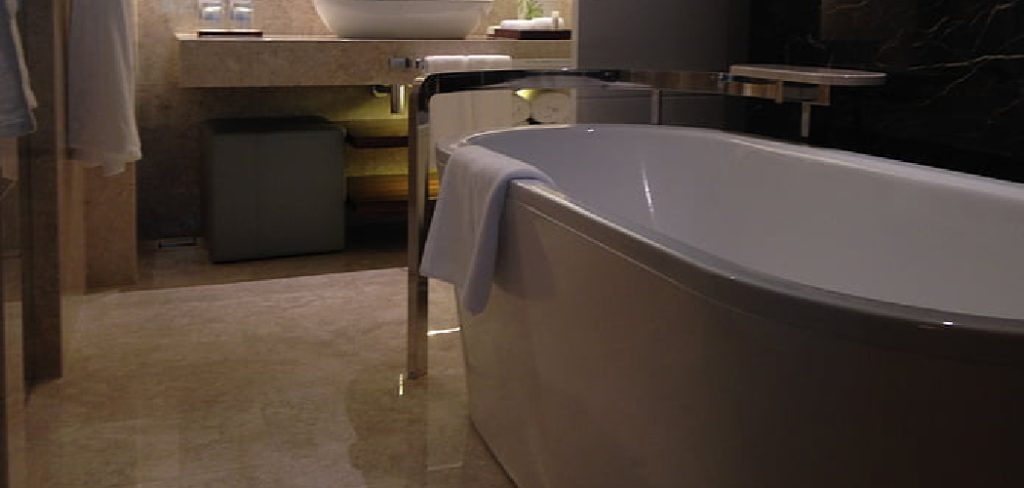
Necessary Items
Before we get into the different methods, it’s important to gather all the necessary items beforehand. These include:
- Large basin or bucket
- Towels
- Essential oils or bath salts (optional)
- Washcloth or loofah
8 The Benefits of Taking a Bath
Before we dive into alternative methods for taking a bath, let’s first talk about why baths can be beneficial. Some potential benefits include:
1. Relieving Stress and Tension
Taking a bath can be a great way to relax and unwind after a long day. Warm water helps soothe tired muscles and can reduce stress and tension in the body. Also, the act of taking a bath can be a meditative experience, allowing you to clear your mind and focus on self-care.
2. Improving Skin Health
Adding essential oils or bath salts to your bath can not only enhance the relaxation experience but also improve the health of your skin. These products can help moisturize, soften, and detoxify the skin, leaving it feeling refreshed and rejuvenated.
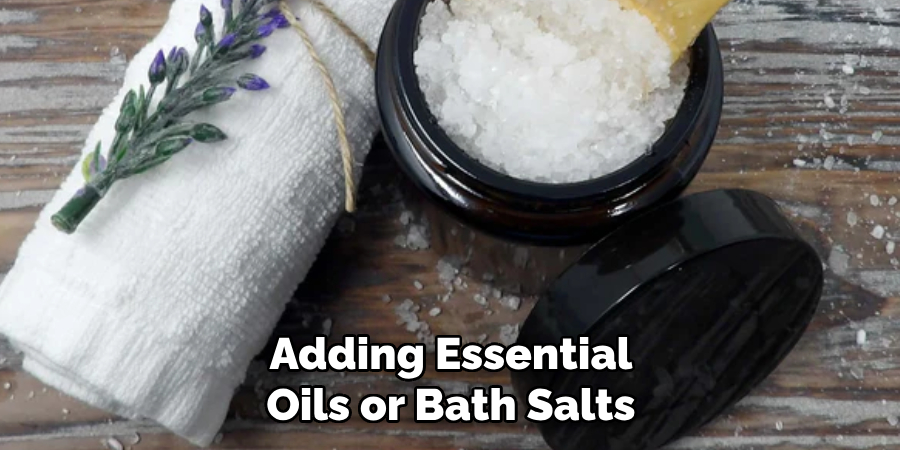
3. Promoting Better Sleep
Taking a bath before bed can help promote better sleep by helping you relax and destress. The warm water can also raise your body temperature, which, in turn, can help regulate your sleep cycle. And let’s be honest, nothing beats crawling into bed feeling clean and refreshed after a bath.
4. Helping With Cold and Flu Symptoms
A warm bath can also provide relief from cold and flu symptoms such as congestion and body aches. The steam from the warm water can help clear your sinuses, while the warmth can soothe sore muscles and joints. Adding eucalyptus oil to your bath can also help with congestion.
5. Improving Mood
It’s no secret that taking a bath can improve your mood. The warm water and relaxation from soaking in the tub can release feel-good hormones, promoting feelings of happiness and calmness. It’s a simple but effective way to boost your mood and overall well-being.
6. Cleansing the Body
While showers are great for daily cleansing, baths can provide a deeper cleanse for your body. The warm water and steam can help open up pores, allowing for better removal of dirt and toxins from the skin. Just be sure to rinse off with cool water after your bath to close the pores back up.

7. Saving Water
Believe it or not, taking a bath can actually save water compared to taking a shower. On average, a bath uses about 36 gallons of water, while a ten-minute shower with a low-flow showerhead can use up to 50 gallons of water. So, if you’re looking for ways to conserve water, consider opting for a bath instead.
8. Promoting Self-Care
Last but certainly not least, taking a bath is a great form of self-care. In our busy lives, it’s important to take time for ourselves and prioritize our mental and physical well-being. A bath can be a simple yet powerful way to do just that.
12 Methods on How to Take a Bath Without a Bathtub
Method 1: The Bucket Bath
The simplest way to take a bath without a bathtub is by using a large basin or bucket. Here’s how to do it:
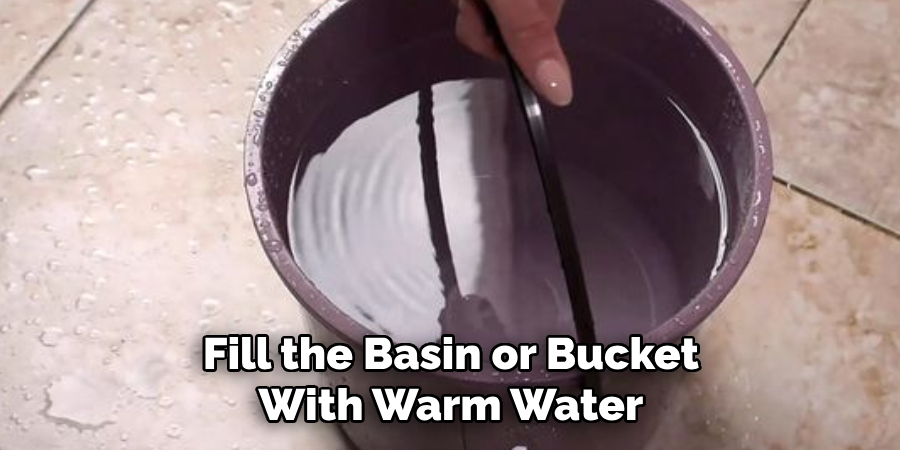
Fill the basin or bucket with warm water, leaving enough room for you to comfortably sit. Add any desired essential oils or bath salts for added benefits and relaxation. Place a towel on the floor next to the basin or bucket. Sit on the towel and slowly lower yourself into the water, using the towel to wash yourself. Once finished, use the towel to pat dry and rinse off any remaining suds.
Method 2: The Shower-Bath Combo
If you have a shower stall but no bathtub, you can still create a bath-like experience by utilizing your showerhead and some creativity. Here’s how:
Take a hot shower as usual, but try not to wet your hair. Once you’re done, turn off the water and close the drain. Fill up the shower stall with a few inches of warm water. Add in any desired oils or bath salts for added benefits. Sit down in the shower stall and enjoy your makeshift bath.
Method 3: The Sink Bath
If you don’t have access to a tub or shower, you can still take a mini bath using your sink. Here’s how:
Fill up your sink with warm water, leaving enough room for you to comfortably sit. Add in any desired oils or bath salts for added benefits. Sit on the edge of the sink and slowly lower yourself into the water, using a washcloth or loofah to wash yourself. Once finished, use a towel to pat dry.
Method 4: The Hot Tub Bath
If you’re lucky enough to have access to a hot tub, it can be a great alternative to taking a bath. Here’s how:
Fill up the hot tub with warm water and add in any desired oils or bath salts. Soak in the tub for at least 20 minutes, allowing the warm water to relax your muscles and promote overall relaxation. Just be sure to follow proper hot tub safety guidelines.
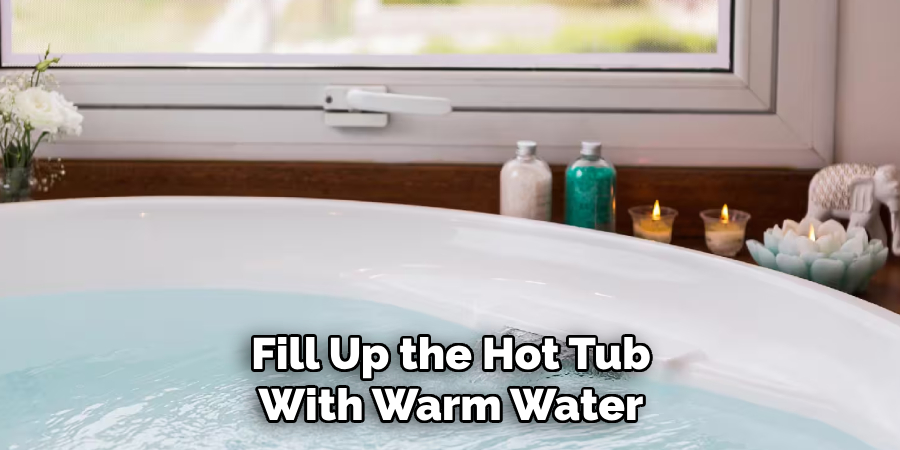
Method 5: The Natural Water Bath
If you live near a lake, river, or ocean, you can also take a bath in natural water. Here’s how:
Find a safe and clean body of water to bathe in. Fill up a basin or bucket with the natural water and add any desired oils or bath salts. Sit by the shoreline and slowly lower yourself into the water. Enjoy your bath while surrounded by beautiful scenery.
Method 6: The Sauna Bath
Similar to a hot tub, if you have access to a sauna, it can also be a great alternative for taking a bath. Here’s how:
Spend some time in the sauna to open up your pores and relax your muscles. Once finished, take a quick shower to rinse off any sweat and dirt. Then, fill up a basin or bucket with warm water and add in any desired oils or bath salts. Sit on a towel outside of the sauna and slowly lower yourself into the water for a soothing bath.
Method 7: The Towel Bath
This method is perfect for those who are short on time or don’t have access to any other bathing methods. Here’s how:
Fill up a large basin or bucket with warm water and add in any desired oils or bath salts. Lay a towel on the floor and soak it in the water. Lie down on the towel and use it to wash yourself, enjoying a mini bath experience.
Method 8: The Wipe Down Bath
If you’re unable to submerge yourself in water, you can still experience the benefits of a bath by using a washcloth or wipes. Here’s how:
Fill up a basin with warm water and add in any desired oils or bath salts. Soak a washcloth or wipes in the water and use them to wipe down your body, enjoying the relaxation and cleansing benefits of a bath.
Method 9: The Foot Bath
If you’re feeling under the weather, a foot bath can be a great way to soothe tired and achy feet. Here’s how:
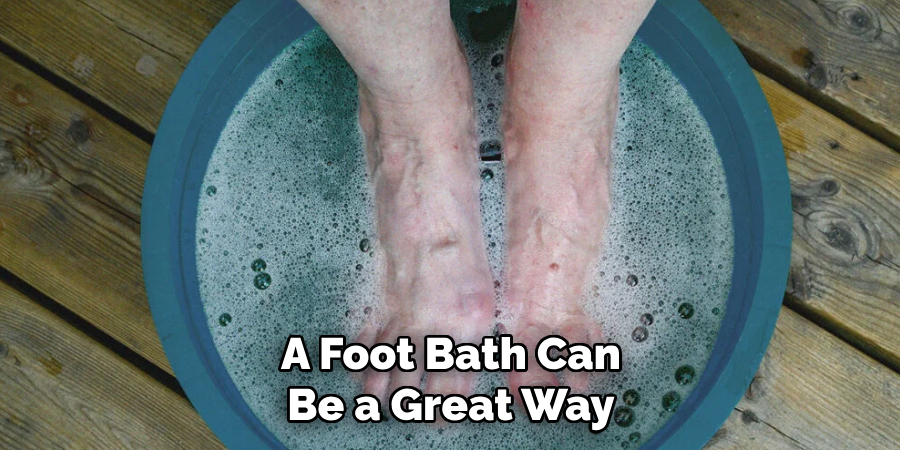
Fill up a basin with warm water and add in any desired oils or Epsom salt for added relief. Soak your feet in the water for at least 20 minutes, enjoying the relaxation and potential pain relief.
Method 10: The Kitchen Sink Bath
Similar to the sink bath method, you can also use your kitchen sink for a mini bath experience. Here’s how:
Clean out your kitchen sink and fill it up with warm water. Add in any desired oils or bath salts for added benefits. Sit on the edge of the sink and slowly lower your feet into the water, using a washcloth or loofah to clean yourself. Once finished, use a towel to dry off.
Method 11: The Inflatable Pool Bath
If you have access to an inflatable pool, it can be a fun and creative way to take a bath. Here’s how:
Inflate the pool and fill it up with warm water. Add in any desired oils or bath salts for added benefits. Sit on the edge of the pool and slowly lower yourself into the water, using a washcloth or loofah to clean yourself. Enjoy your makeshift bath while soaking in the sun.
Method 12: The Camping Shower Bag Bath
For those who enjoy camping, a portable shower bag can also be used for a bath. Here’s how:
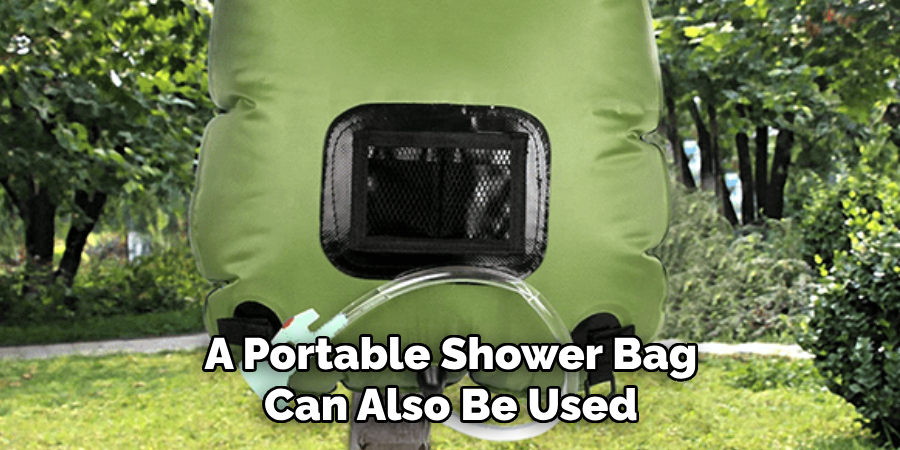
Fill up the shower bag with warm water and hang it from a tree or other sturdy object. Add in any desired oils or bath salts for added benefits. Stand underneath the shower bag and use it to rinse off while enjoying a refreshing outdoor bath experience.
No bathtub? No problem! These 12 methods on how to take a bath without a bathtub for taking a bath without a tub can provide you with alternative options for relaxation and self-care. Whether it’s using your sink, shower stall, or natural water, there are plenty of ways to enjoy the benefits of a bath even without a bathtub. Get creative and find what works best for you!
9 Safety Measures for Taking a Bath Without a Tub
While taking a bath without a tub can be convenient and enjoyable, it’s important to keep safety in mind. Here are 9 tips to ensure a safe and pleasant experience:
1) Use a Non-slip Mat
When using any type of makeshift bathtub, it’s important to prevent slipping and falling. Place a non-slip mat or towel on the floor of your shower stall, sink, or other surface before filling it with water. If you’re taking a bath outside, make sure the ground is sturdy and not slick to avoid accidents.
2) Monitor Water Temperature
Be cautious when filling up your alternative bathtub with water. Test the temperature before getting in to ensure it’s not too hot or too cold. This can help prevent burns or discomfort during your bath.
3) Avoid Overfilling
Make sure to not overfill your alternative bathtub, as this can cause water to spill or overflow. This is especially important for using a sink or basin, as it can quickly become messy and slippery. Soak in the water while sitting or lying down to prevent any accidents.
4) Use Caution with Oils and Bath Salts
While using oils and bath salts can enhance your bathing experience, it’s important to use them safely. Avoid adding too much oil, as it can make surfaces slippery. Also, be cautious about using certain oils if you have sensitive skin or allergies.
5) Don’t Leave Children Unattended
If you have children, make sure to supervise them if they’re taking a bath without a tub. This can help prevent accidents and ensure their safety. When using natural water, be extra cautious and make sure they are not left alone by the shore.
6) Keep Cleaning Supplies Nearby
Accidents can happen, especially when taking a bath in unconventional ways. Make sure to have cleaning supplies nearby in case of spills or messes. This can also help keep your makeshift bathtub clean and hygienic.
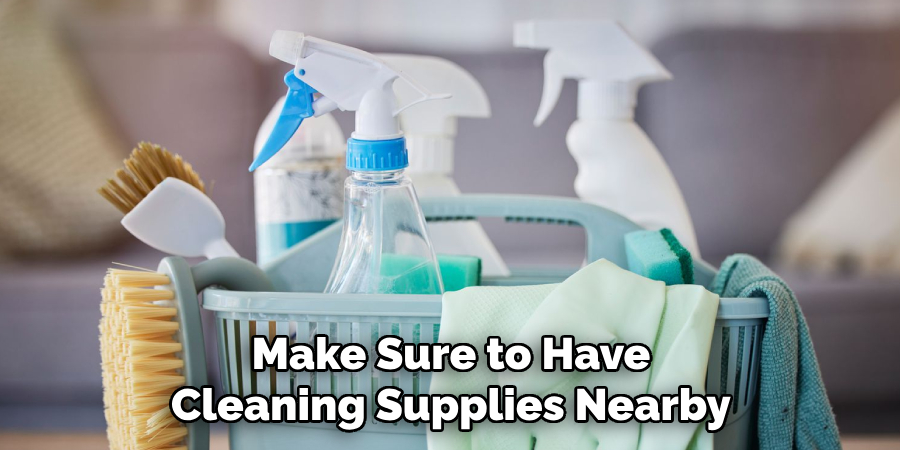
7) Take Breaks
Just like taking a bath in a tub, it’s important to take breaks and not soak for too long. This can help prevent feeling lightheaded or dizzy from being in warm water for an extended period of time. Even if you’re enjoying your bath, make sure to take breaks and listen to your body.
8) Check for Any Allergies or Sensitivities
Before using any oils or products in your alternative bathtub, it’s important to check for any allergies or sensitivities. This can help prevent an adverse reaction or discomfort during your bath. If unsure, do a patch test on a small area of skin before fully immersing yourself in the water.
9) Use Common Sense
Lastly, always use common sense and caution when taking a bath without a tub. Don’t try to do anything too risky or unsafe, and if you’re unsure about something, it’s better to err on the side of caution. Remember that safety should always be a top priority.
Taking a bath without a tub may seem unconventional, but it can provide the same relaxation and cleansing benefits as a traditional bath. Whether you’re using your sink, shower stall, or natural water sources, there are plenty of ways to get creative and enjoy a soothing bath experience.
Just remember to prioritize safety and use caution when trying out different methods. Overall, taking a bath without a tub can still be an enjoyable and relaxing experience. With these alternative methods and safety measures in mind, anyone can have a rejuvenating bath even without a bathtub at their disposal.
Frequently Asked Questions
Is It Safe to Take a Bath Without a Tub?
Yes, as long as you follow basic safety measures and avoid potential hazards. This includes using warm, not hot, water and taking breaks when needed.
What Are Some Unconventional Methods for Taking a Bath?
Some unconventional methods for taking a bath include using your sink or shower stall, creating a makeshift tub with plastic sheeting and pillows, or even using a natural body of water like a lake or river.
Can I Still Use Bath Products Without a Tub?
Yes, you can still use your favorite bath products when taking a bath without a tub. Just make sure to have a safe and efficient way to dispose of the water afterwards.
How Can I Make My Bath Without a Tub More Relaxing?
You can enhance your bath experience by using scented candles or essential oils, playing soothing music, trying dry brushing beforehand, adding Epsom salt or a detoxifying bath soak, using a bath pillow for comfort, and following up with moisturizer afterward. Just remember to always prioritize safety and avoid any potential hazards. Let your creativity flow, and enjoy the relaxation of taking a bath without a tub.
Conclusion
Taking a bath without a tub may seem unconventional, but with the right tips and techniques on how to take a bath without a bathtub, it can be just as enjoyable and relaxing as a traditional bath. By avoiding certain things like hot water forgetting about safety, and incorporating additional tips like using scented candles or essential oils, you can create a spa-like experience in the comfort of your own home.
So go ahead and try out these methods for yourself – your mind and body will thank you. Just remember, the most important thing is to prioritize safety and make sure you’re comfortable throughout the entire experience.

